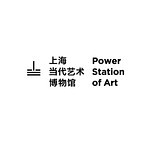Freeing Architecture
July 18–October 7, 2019
678 Miaojiang Road
200011 Shanghai
China
Hours: Tuesday–Sunday 11am–7pm
T +86 21 3110 8550
media@powerstationofart.com
From July 18-October 7, Shanghai’s Power Station of Art and the Fondation Cartier pour l’art contemporain present the first solo exhibition in China of Japanese architect, Venice Architecture Biennale’s winner of the Golden Lion award, Junya Ishigami: Freeing Architecture. The exhibition was created at the initiative of the Fondation Cartier where it was originally exhibited in Paris in 2018, Ishigami himself has redesigned the exhibition according to the PSA venue. The exhibition sheds a light on the processes and details of Ishigami’s concept realization through large-scale models, architectural drawings, design manuscripts, and films.
The exhibition title Freeing Architecture expresses Ishigami’s unwillingness to succumb to traditional architectural forms and methods of expression. Instead, he freely explores and creates new definitions of architecture. The exhibition will cover 20 groups of architectural projects such as “The KAIT (Kanagawa Institute of Technology) Workshop,” “House & Restaurant,” “Forest Kindergarten,” and “Chapel of Valley.” Ishigami believes that buildings today are no longer just simple shelters, but diverse “sceneries” that make up the vast space of this world. He uses his mastery of environment, nature and scale to transform buildings into entirely new sceneries and thereby discovering entirely new worlds. In the “The KAIT Workshop,” his first independent project, Ishigami used 305 unevenly distributed columns of different shapes to create ambiguity within the scenery. If people enter a “forest,” they can freely wander, get lost, and explore unique private spaces.
In his many projects, Ishigami demonstrates an amazing capacity to conceive his practice as being outside the boundaries of architectural “scale” thinking. He used the scale of an imaginary horizon to allow the students to “travel” through the “University Multipurpose Plaza.” The scale of a lake surface became the skeleton of the scenery for China Shandong’s “Cultural Center.”
Ishigami’s architectural practice can now be found across the globe, but he always attaches importance to the human and natural environment of each project. He emphasizes design concepts that explore and extend the unknown within the existing site. Ishigami received an invitation to build the “Chapel of Valley” located at the base of a small narrow valley in China’s Shandong province. Ishigami took advantage of the terrain’s natural ruggedness to build a structure that is 45 meters tall and only 1.3 meters wide. The slender and high walls accentuate the valley’s natural depth, while the light that pours into the depth of the building becomes still and holy.
In a pluralistic society that’s rapidly changing, Ishigami believes that we need to think freely and explore various possibilities of free architecture. Ishigami points out that “If architects and non-architects from all over, people all around the world could think about architecture more freely. If such scenery joined together to form a single space, the world would be all the richer for it. The different values in the world and types of architecture in the world would come closer together. Architecture would become more intimate than it is now.”
Dates: July 18, 2019-October 7, 2019
Location: 7 floor, Power Station of Art
Organizers: Power Station of Art, Fondation Cartier pour l’art contemporain

